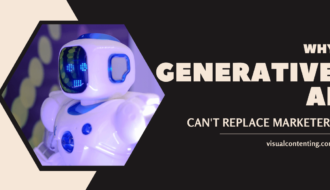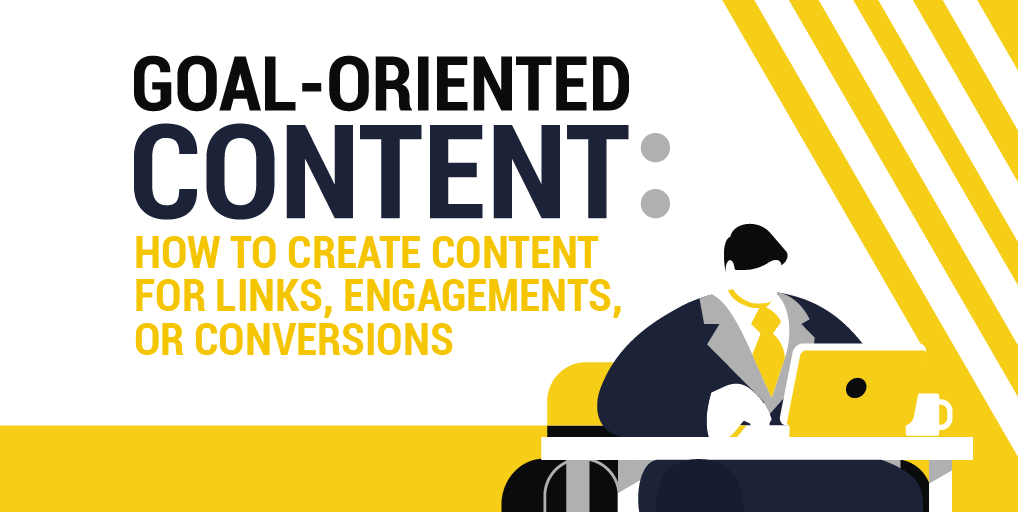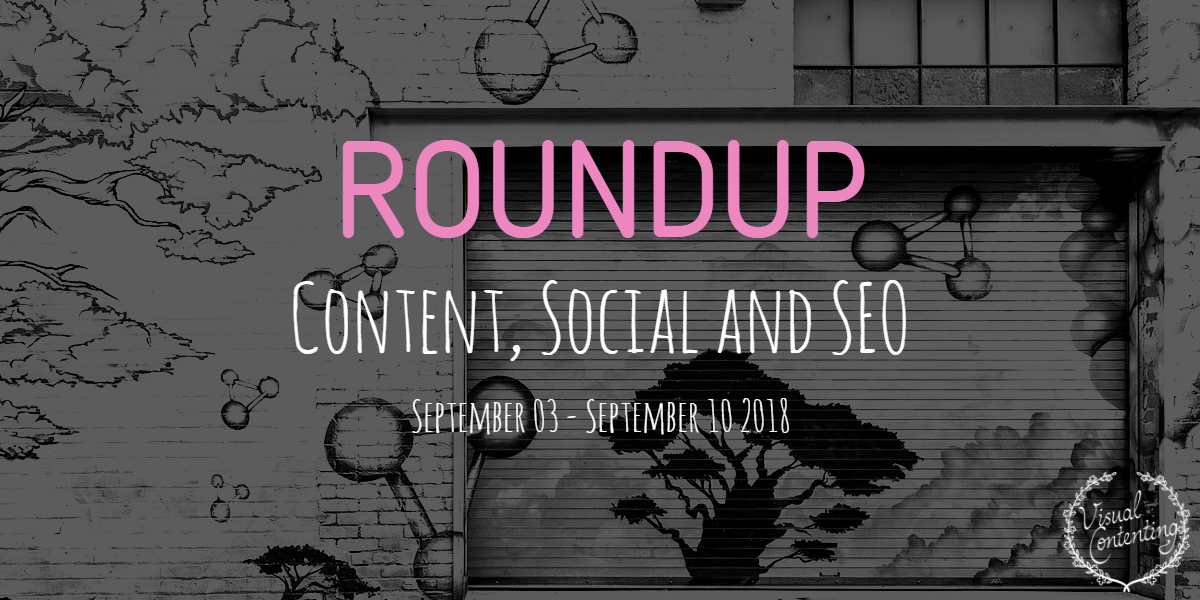If we were to ask most business owners what their primary goal is, chances are that the vast majority would simply answer “more sales” (to absolutely no one’s surprise.) Can you blame them? You need to make money to stay in the game. However, you can blame some of them for not understanding what it takes to get there.
Believing that with just a few ads, some money into a tiny marketing budget, and a newsletter you are all set is just being gullible. You need a solid content marketing strategy with short, mid, and long term goals that go way beyond that generic “more sales,” and the content to support it.
And few other pieces of content can support that type of setup better than video.
Videos have proven to be highly effective at a number of things. 90% of consumers say that videos help them decide their purchases. 90% of consumers say that videos help them decide their purchases. Click To Tweet Companies using videos see a 41% increase in traffic through web searches. Companies using videos see a 41% increase in traffic through web searches. Click To Tweet Videos in landing pages boost the conversion rate to up to 80%. Videos in landing pages boost the conversion rate to up to 80%. Click To Tweet There's plenty of figures to illustrate how video can change your business for good.
But even if you create a beautiful explainer video or an amazing animated ad, without a solid plan to back it up, your potential results will be hamstrung from the get-go.
The best place to start? To understand what marketers call “The buyer’s journey,” and start shaping your content strategy around it.

The Buyer’s Journey Explained
That journey can be divided into three stages, each one as important as the next:
- Awareness: when people understand that they have a need and find your product or service as a potential way to fulfill it.
- Consideration: the stage where people start weighing their options and comparing you with other products that address the same issue.
- Decision: people are ready to make the jump and are ready to hear your final statements as to why they should pick you.
Take a look at how this process works:
All of these stages are insanely important to get those coveted "more sales." But today, I'll focus on the second stage, the Consideration stage. Why? Because although brands have a knack to getting them noticed, many fail to convince their audiences they are worth every cent they cost. Are you among them? Here's what you need to do.
Create high-quality content tailored for the stage
Is that big enough, or should I say it again? I'll just say it again: your target audience won't get past the awareness stage without some seriously high-quality content. They might bump into you through some cleverly placed ads, a funny animated video you've made for your awareness stage, or even through word of mouth.
But your brand doesn’t stand a chance if you don’t put some quality work into the consideration stage. Which should lead us to the question - what can be considered as high-quality content?
It's a hard question to answer. There isn't a set of rules you can follow blindly to create such content. Yet there are some guidelines that apply to any content in almost any industry out there, and that can help you with your content. Your content should be
- Useful and informative: what you are sharing with your audience has to be relevant for their members. The content needs to answer questions, provide tips or precise information, be entertaining, or any other use it may have given the context in which you are putting it.
- Valuable: everyone out there wants their content to feel worthwhile. But the most relevant content of them all is the one that provides the insight nobody's giving away. More details, a more in-depth analysis, a unique experience are things that can make you stand out here.
- Engaging: in the age of entertainment, you can't afford to be boring. That's why your content has to be lively, colorful, and enthralling. Be it a nice-looking photo, a dynamic video, or a captivating article; the content has to shine on its own.
- Trustworthy: people value the brands they can trust. You can do so with your content by doing serious research about the topics you discuss, include sources, reviews, and testimonials. Showing the content creator’s profile won’t hurt you, either.
As you may already be suspecting, yes, creating this kind of content will take some effort. The good news is that you’ll have plenty of content types to choose from, so you can engage in multifaceted attacks to gain your audience’s consideration. From downloadable resources to giveaways and video marketing materials, there’s something for everyone’s taste.
For instance, you can create a video series covering the basics of your business (say, little tips to train a dog if you’re a vet, decor ideas if you work in interior design, and so on). You can also create ebooks that cover a hot topic (like an ebook on the things someone has to consider before buying a car) or even give away free samples of a new product.
Of course, having that many options can be somewhat daunting, so here are my top picks as to what you should consider doing for this stage.
Offer valuable contents like ebooks and webinars
If you’re coming into this stage swinging your big sales-y bat aimed at your audience’s head, you’re bound to fail. You need to show them you care about the specific need that brought them to your brand and that you seriously want to help without jamming your product or service down their throats.
That’s when premium content like eBooks, webinars, white papers, and the like will shine the brightest. With them, you will keep them interested, offer them solid information that can actually help them satisfy their very needs and oh-so-casually drop some indirect and not-so-much hints about how the thing you’re selling is what they are ultimately looking for.
Basically, you're crying out for attention, saying, "Hey there, I know how to help you with that, here's a taste of it." You are proving to them that you have what it takes for people to consider you as a serious option to help them with their specific problems.
Of course, there’s always the issue with gating or not gating content as valuable as this. You’ve surely come across a website that asked for your personal info before accessing a specific ebook or whitepaper. It’s almost natural to feel like these materials should be gated. But should they, really?
There isn’t a one-size-fits-all answer. What you should be thinking before gating your content or not is if it’s fair to ask for the audience’s personal details in exchange for what you’re offering. You might feel tempted to answer yes every time, but that’s hardly the case.
Here are some pointers to help you decide whether you should ask for personal info before providing access to your original content.
- Are you part of a well-known brand? If you aren’t, then maybe you should give away your content ungated to increase your brand awareness.
- Do your ungated content has enough quality? If you don't offer high-quality materials without asking for anything in return, you can't expect people to give away their info, trusting that whatever is behind the gate is high quality. How would they know, if you haven't proved to them that you're capable of offering such content?
- Are you introducing a new service or product? You'll need the exposure, so you're pretty much in front of the same scenario of an unknown company: visibility should matter more than the data.
The rule of thumb you can follow here is: don’t gate content where you only talk about your brand. Additionally, you should think of the stages of the buyer’s journey when deciding which personal data you'll ask for to unlock that content. In the consideration stage, don't go beyond the name, email, and company. You're not in a position to ask for more yet.
Develop eye-catching explainer videos
Video marketing has proven to be fantastic to get people’s attention and make a brand’s point. According to a study by Ipsos quoted by Google, 81% of video-viewing occasions get all or most of people's attention. Combine that with the fact that 37% of viewers watch the entire video and that videos under 90 seconds get a 53% retention rate; you'll understand why you need to go out there and compete with your videos for people's attention.
That’s why you want some serious video production for this stage: a video can quickly and effectively show how your audience’s original need can be fulfilled, all in a very entertaining way.
That’s why explainer videos are so great for the consideration stage. Under a couple of minutes, you can offer a brief view of the problem and the solution you offer, all coupled with the nice benefits only you can provide. The best of all is that you’re doing so through a format people love and which will be consumed even more in the future.
Of course, you have to remember to keep the explainer videos short and to the point for maximum effect. There’s a lot of craft that goes into creating a great online video business, so if you’re having doubts, perhaps you can get in touch with a skilled video production company to help you out.
Arrange sweepstakes and contests
If people are searching for different options to fulfill their needs, then you definitely need to take a step forward and show that there's no better alternative than you. Showing your value and your unique benefits are, of course, great to do this. But you can also “lure” them into considering you by offering something else.
That something else can be a sweepstake or contest in which anyone can participate. The idea behind this tactic is simple: offer something nice to the people visiting your site or social media profiles in order to keep them engaged with you. By doing so, you’ll make them pay attention to what your brand can actually do for them and get your message across.
Be creative with what you offer here. You can offer a sample of your products, a trial in your service, or something completely unrelated. The idea is to get noticed! And if you play your cards right, after entering in your contests, people will stick around to see what you have to offer and even explore your brand a little more.
Oh, and in case you were wondering if sweepstakes and contests feel like a B2C thing that could never work in your B2B company, think again. These kinds of things work with any kind of company, regardless of who they are selling their products or services to.
Yes, it’s easier to arrange a contest in your Instagram where your B2C clients show the world how in love they are with your product by posting an image that proves it (like Domino’s Pizza did with its “#PieceofthePieContest”), but something like that can be replicated in a B2B environment.
But that doesn’t mean B2B clients don’t appreciate being invited into something similar. You can give away a free subscription to your online service, some units of your best-selling products, or early access to your newest product. What can you ask in return? For people to share why they got in the industry or a photo of why they love their job.
The fact that you sell to other businesses doesn’t mean that people can’t get on board of a well-thought contest or sweepstake. Take what Adobe is doing as a fantastic example. The software company held a contest for students to create graphic works in 14 categories. The prize was a mentorship program for the best works.
What did the company get from this? Exposure to a lot of professionals and almost-professionals, visibility of their software’s features to a wider audience, and contact with some of the most promising talents. And all that with just a competition!
Optimize your blog posts (as many as you can)
A blog is more than just a place for articles to drive traffic through keywords. A blog can be a very persuasive tool within your buyer’s journey, a section where you can show how much you know about your industry, offer valuable insights, address common concerns around your product, and so much more.
That’s why you need to take a new look at your blog (or create one right now if you don’t have one, for Pete’s sake!). The goal is to optimize as many entries as possible not just in a technical, SEO kind of way but also in their content and form. Be sure you’re delivering the message your target audience is expecting to find, be crystal-clear about it and make sure you interconnect your most valuable articles to keep your audience engaged.
Additionally, you should think about the calls to action you’ll use in these articles. Since we’re talking about the consideration stage here, the goal is to educate the audience while also pushing your solution (gently, of course) as the perfect way to address the audience’s problem.
These are the place to offer your ebooks, white papers, case studies, and the like. The CTAs that offer those contents should be relevant, appealing, and underlining of the educational aspect about them. In other words, you have to be clear about what you're offering and be fair for what you ask in return (remember what I've mentioned earlier about gated content).
So, let's say you work selling equipment for beauty clinics. You can put a CTA at the bottom of an article about the newest laser treatment for hair removal, offering to download an ebook about the Dos and Don’ts of using laser equipment.
You are providing a clear value with the CTA, and what it promises, and the material itself will work to position your brand within the customer's mind (because you'll obviously talk about your laser machines to explain the treatment).
Ideally, you could recycle all of the content you've posted there through the years by doing all of the above. However, some articles might be outdated, or their subject isn't of interest anymore. So, start optimizing your evergreen content (AKA the one that's about subjects that haven't changed) and then take a look at the outdated ones to see if you can update them or divert the traffic to more current information.
Optimize your whole website
Are you done with your blog posts? Great! Now it’s time to do the same for your entire website. Depending on how much thought you’ve given to your website, this will take a couple of hours or a whole redesign. Yep, it’s that drastic and that important.
There are so many things that are important for your website that’s hard to get them all in one article. But, since I’m focusing on the consideration stage, let’s review the most important ones that will get you more leads:
- Relevancy: everything you offer on your site has to have a purpose and a goal. Educate your audience about your products, services, and the industry you're in.
- Quality: I've already covered this, but it bears repeating - high-quality content gets more engagement. People that find your content useful and appealing will come back for more and will be more likely to have business with you.
- Site speed: people expect a whole site to load in 3 seconds or less. If yours can't do that, then forget about doing business with them since they won’t stick around to see what you’re offering.
- Internal links: if visitors get engaged with the content, you’re giving them, then you should always offer them more while they are paying attention. A well-built site is linked internally following a coherent strategy that provides users with more reading options. Besides, internal links help search engines crawl the site and help in improving your SEO ranking for certain keywords. Speaking of which...
- Keywords: a huge part of being clear and concise in the messages you use in your site is to put keywords where they belong. Using them wisely on titles, subtitles, links, and images provide the audience with a clear idea of what they'll find and what they can expect.
- Authority: if you are regularly putting out quality content, people will surely find you useful and will engage with you more often. Your content will be linked, shared, and commented, and your visibility will grow. This process will lead to a boosted trust from your audience, your industry, and search engines. All of that will get you authority, something that can dramatically change your website, as a better domain authority score corresponds to a greater ability to rank in search engines (and better chances of being found by your potential customers)
- Social proof: having social profiles is fantastic to build a community around your brand, especially if you put your customers in the center of your marketing strategy. Centering on your clients, you can use social media to address their needs and be of service, while also building additional trust for non-clients to see. After all, there isn't a better way to promote a business than a happy customer, and you can use your social media to do just that.
Be as brutal as needed while analyzing all this. Your website is your brand’s presentation to the whole world, so you need it in top shape. Change everything that feels out of place or outdated, rearrange the internal pages and even delete what you feel isn’t relevant anymore. What’s more - make this analysis a frequent task and appoint an annual analysis of your site to be sure you’re always in your best shape.
Wrapping Up
Remember, all of the tactics we’ve talked about here apply to the consideration stage, where your brand is just one more in a vast array of options. Keeping this mind will help you focus your work on high-quality marketing materials, the only way you have to stand out and make it to your audience’s final options.
I know some of these things seem counter-intuitive. Why would you share useful articles, videos, and information for free? Well, that's because people have come to expect those kinds of things from brands. People want to be informed before even considering making a decision, so you have to be sure that yours is the brand that provides them with the most useful information.
Doing all this is a tough job and can take a lot of time. Go ahead and take as much as you need. All of these elements make for a solid base for any marketing strategy, so you can't overlook them or treat them as if they didn't matter. People will notice how much work you've spent with them, so make your marketing materials shine for a successful consideration stage!
Related Posts
Victor Blasco’s an audiovisual designer, video marketing expert, and founder/CEO of the explainer video company Yum Yum Videos. Besides running the business, he’s a lifelong student of Chinese philosophy and a passionate geek for all things sci-fi.






